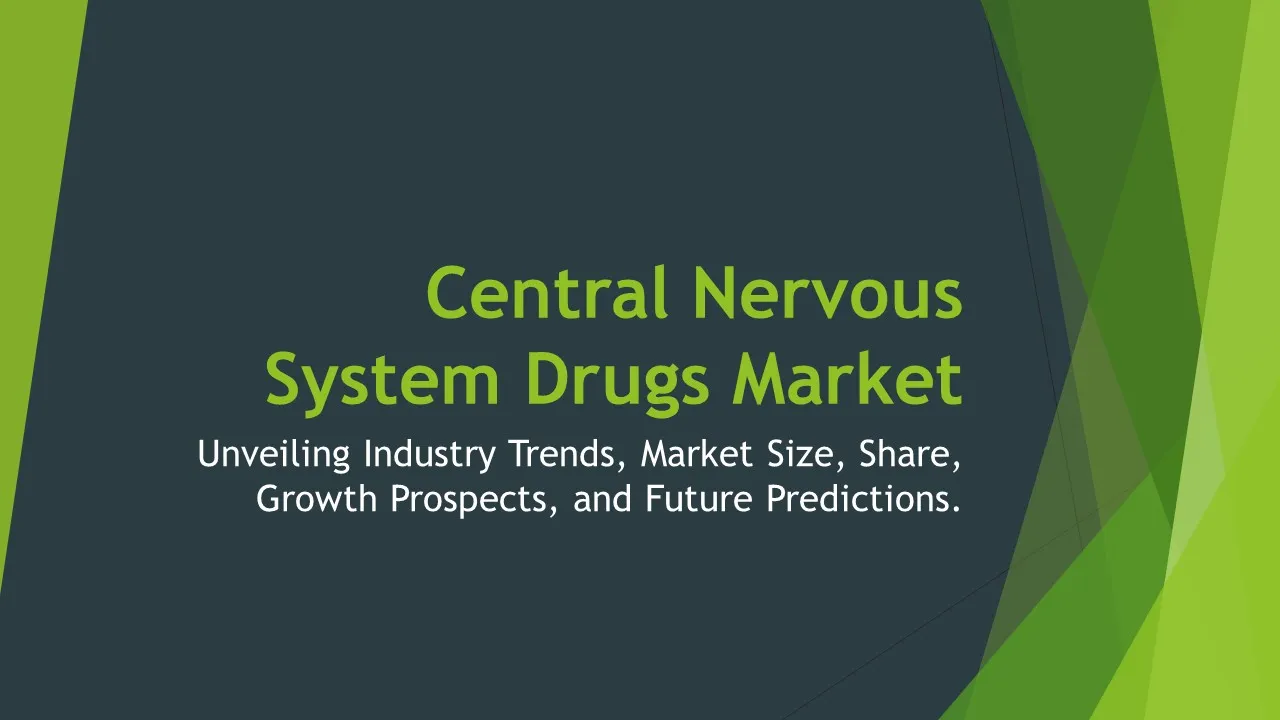Drugs for Asthma and COPD
Asthma and COPD Drugs Market Segments - by Product Type (Bronchodilators, Corticosteroids, Combination Drugs, Monoclonal Antibodies, Anticholinergics), Application (Asthma, COPD), Distribution Channel (Hospital Pharmacies, Retail Pharmacies, Online Pharmacies), Ingredient Type (Fluticasone, Salmeterol, Budesonide, Tiotropium, Montelukast), and Region (North America, Europe, Asia Pacific, Latin America, Middle East & Africa) - Global Industry Analysis, Growth, Share, Size, Trends, and Forecast 2025-2035
- Report Preview
- Table Of Content
- Segments
- Methodology
Drugs for Asthma and COPD Market Outlook
The global market for drugs targeted at Asthma and Chronic Obstructive Pulmonary Disease (COPD) is projected to reach approximately USD 52 billion by the year 2035, with a compound annual growth rate (CAGR) of around 6.5% during the forecast period from 2025 to 2035. The growth of this market is primarily driven by an increasing prevalence of respiratory diseases, coupled with advancements in drug formulations and delivery mechanisms. Additionally, the rising awareness regarding asthma and COPD management, alongside the growing elderly population who are more susceptible to these conditions, further fuels the demand for effective pharmaceuticals. Innovations in targeted therapies, such as monoclonal antibodies, and the growing accessibility of healthcare services are significant contributors to this market's expansion. Furthermore, increased government initiatives and funding for respiratory disease research are expected to bolster market growth in the coming years.
Growth Factor of the Market
Several factors are pivotal to the growth of the asthma and COPD drugs market. Firstly, the rising incidence of respiratory diseases among both adults and children is a critical driver, as more individuals require effective treatment options. Secondly, technological advancements in drug delivery systems, such as inhalers and nebulizers, have improved patient compliance and treatment outcomes, facilitating broader market acceptance. Thirdly, the increasing availability of biologic therapies, particularly monoclonal antibodies, has provided healthcare professionals with novel treatment avenues that target specific pathways involved in asthma and COPD. Moreover, the growing focus on preventive healthcare and proactive disease management is leading to increased prescriptions and usage of inhaled medications. Lastly, the expansion of healthcare infrastructure in emerging economies is making respiratory medications more accessible to patients, thereby fueling market growth.
Key Highlights of the Market
- The global asthma and COPD drugs market is projected to exceed USD 52 billion by 2035.
- Significant growth of approximately 6.5% CAGR is expected between 2025 and 2035.
- Technological innovations in drug delivery systems are enhancing treatment compliance.
- Rising awareness regarding respiratory diseases is contributing to market expansion.
- Emerging economies are experiencing increased accessibility to necessary medications.
By Product Type
Bronchodilators:
Bronchodilators are medications that relax the muscles in the airways, increasing airflow to the lungs, and are crucial in managing asthma and COPD symptoms. They are primarily categorized into short-acting and long-acting bronchodilators, allowing for immediate relief or prolonged control of symptoms, respectively. The demand for bronchodilators continues to rise due to their essential role in symptom management, especially among patients experiencing acute exacerbations. Inhalation devices such as meter-dosed inhalers (MDIs) and nebulizers are commonly used for administering these drugs, making them convenient and effective. The development of novel bronchodilator formulations that provide enhanced efficacy and reduced side effects is also fostering market growth.
Corticosteroids:
Corticosteroids are anti-inflammatory drugs that are often prescribed for long-term management of asthma and COPD, helping to reduce airway inflammation and prevent exacerbations. These medications can be administered orally or through inhalation, with inhaled corticosteroids being the preferred option for long-term management due to their localized effects and minimized systemic side effects. The rising prevalence of asthma and COPD is propelling the demand for corticosteroids, as they are essential in controlling chronic symptoms and improving lung function. Continuous research is also focusing on developing new corticosteroid formulations, which aim to enhance therapeutic outcomes while reducing adverse effects.
Combination Drugs:
Combination drugs that include both a corticosteroid and a bronchodilator are increasingly popular in asthma and COPD management due to their synergistic effects. By combining these two types of agents, patients can benefit from both rapid relief of bronchospasm and long-term anti-inflammatory action. This dual approach often leads to improved patient adherence to treatment regimens and better overall management of chronic respiratory diseases. The market for combination drugs is experiencing significant growth as healthcare providers recognize the advantages of these therapies, especially in patients with moderate to severe forms of asthma and COPD who require more comprehensive management strategies.
Monoclonal Antibodies:
Monoclonal antibodies represent a newer class of biologic therapies that target specific molecules involved in the inflammatory processes of asthma and COPD. These medications have shown promise in treating severe cases where traditional therapies may not be effective. Monoclonal antibodies work by inhibiting specific pathways, such as IgE production in asthma, leading to reduced symptom severity and frequency of exacerbations. The increasing understanding of the pathophysiology of asthma and COPD is driving the development and approval of these advanced therapies, which are expected to capture a larger share of the market in the coming years, particularly as personalized medicine becomes more prevalent in respiratory care.
Anticholinergics:
Anticholinergics are another important class of medications used primarily for the management of COPD. These drugs function by blocking the action of acetylcholine, leading to bronchodilation and improved airflow in the lungs. Anticholinergics can be classified into short-acting and long-acting formulations, with long-acting options offering sustained relief for patients. The effectiveness of anticholinergics, particularly in reducing COPD exacerbations and improving overall lung function, has led to an increase in their prescription. The market for anticholinergics is expected to grow as more patients are diagnosed with COPD and require effective management strategies.
By Application
Asthma:
The application of drugs for asthma management is a significant segment of the market, driven by the high prevalence of the disease globally. Asthma medications are aimed at alleviating symptoms such as wheezing, coughing, and shortness of breath, while also addressing the underlying inflammation. The market is characterized by a variety of treatment options, including inhalers, oral medications, and biologics, catering to varying severity levels and patient needs. As awareness regarding asthma management grows and more individuals are diagnosed, the demand for effective asthma drugs is expected to increase, resulting in a robust market outlook. Moreover, ongoing research into innovative therapies is likely to further enhance treatment options available to asthma patients.
COPD:
The market for drugs used explicitly for Chronic Obstructive Pulmonary Disease (COPD) continues to expand, driven by an increasing prevalence of this chronic condition globally. COPD management often requires a multifaceted approach that includes bronchodilators and corticosteroids to alleviate symptoms and improve lung function. The aging population, who are particularly susceptible to respiratory diseases, is a major contributor to the rising incidence of COPD. As healthcare providers become more adept at diagnosing and treating COPD, the demand for effective medications is expected to grow significantly. Additionally, the emergence of novel therapies and ongoing clinical research aimed at improving COPD treatment outcomes will likely enhance the market for COPD drugs.
By Distribution Channel
Hospital Pharmacies:
Hospital pharmacies play a crucial role in the distribution of asthma and COPD medications, especially for patients requiring immediate care and specialized treatment. These pharmacies are equipped to provide a wide range of pharmaceutical options, including intravenous medications and inhalers that are critical for acute management. The growth of hospital pharmacies is driven by the increasing number of hospital admissions due to respiratory diseases and the need for close monitoring and management of such patients. The collaboration between hospitals and pharmaceutical companies is also strengthening the supply chain and ensuring that essential medications are readily available for patients in need.
Retail Pharmacies:
Retail pharmacies are a major distribution channel for asthma and COPD medications, providing patients with convenient access to essential drugs for daily management. The convenience of obtaining prescriptions from local pharmacies is a significant advantage for patients, particularly those with chronic conditions who require ongoing therapy. Retail pharmacies often offer a range of products, including inhalers, oral medications, and over-the-counter options, catering to varying patient needs. As awareness of respiratory diseases increases and more individuals seek treatment, the retail pharmacy segment is expected to experience growth, supported by initiatives to enhance medication adherence and patient education.
Online Pharmacies:
The emergence of online pharmacies has transformed the way patients access asthma and COPD medications, offering a more convenient and sometimes cost-effective option for procurement. Online platforms allow patients to order prescriptions and have them delivered directly to their homes, which can be particularly beneficial for individuals with mobility challenges or those living in remote areas. The growth of e-commerce in healthcare is being fueled by the increasing internet penetration and the rising preference for home delivery services. As more patients turn to online pharmacies for their medication needs, this distribution channel is set to expand significantly, providing a vital alternative for asthma and COPD treatment.
By Ingredient Type
Fluticasone:
Fluticasone is a widely used corticosteroid in the management of asthma and COPD, known for its potent anti-inflammatory properties. As an inhaled corticosteroid, it effectively reduces inflammation in the airways and helps prevent asthma exacerbations. The increasing focus on asthma and COPD management has led to a surge in prescriptions for fluticasone, as it is often combined with other bronchodilators for enhanced efficacy. New formulations and delivery methods continue to be developed, increasing its appeal among healthcare providers and patients alike. The robust demand for fluticasone is expected to contribute significantly to the overall growth of the asthma and COPD drugs market.
Salmeterol:
Salmeterol is a long-acting beta-agonist (LABA) used in conjunction with inhaled corticosteroids for the management of asthma and COPD. It provides prolonged bronchodilation, making it an essential component of combination therapies. The market for salmeterol is driven by its effectiveness in improving lung function and reducing the frequency of exacerbations in patients with chronic respiratory diseases. Continuous advancements in formulation and delivery technologies are likely to bolster its market presence, as healthcare providers increasingly recognize the benefits of dual therapy approaches. The growing number of patients diagnosed with asthma and COPD will further enhance the demand for salmeterol.
Budesonide:
Budesonide is another key corticosteroid used in the treatment of asthma and COPD, known for its effectiveness in reducing airway inflammation. It is available in both inhaled and nebulized forms, making it versatile for various patient needs. The increasing prevalence of asthma and COPD is driving the demand for budesonide, as it is often prescribed for long-term control of symptoms. The ongoing research into new formulations and combination products is expected to expand the market for budesonide, making it an important player in respiratory disease management. Its established safety profile and efficacy contribute to its sustained market growth.
Tiotropium:
Tiotropium is a long-acting anticholinergic medication primarily used for the management of COPD. It works by relaxing the muscles around the airways, leading to improved airflow and reduced symptoms. The introduction of tiotropium inhalers significantly improved the management of COPD, and its once-daily dosing regimen enhances patient compliance. The growing recognition of the importance of long-term management strategies in COPD is driving the demand for tiotropium. As more patients are diagnosed and treated for COPD, the market for tiotropium is projected to expand considerably, supported by ongoing clinical studies validating its efficacy.
Montelukast:
Montelukast is a leukotriene receptor antagonist commonly used in the treatment of asthma and allergic rhinitis. It plays a crucial role in managing asthma symptoms by inhibiting the action of leukotrienes, which contribute to airway inflammation and constriction. The increasing prevalence of asthma among both children and adults has led to a steady demand for montelukast, as it is often prescribed as an adjunct therapy alongside inhaled corticosteroids. The market for montelukast is expected to grow due to its established safety profile and ease of use, making it a viable option for many patients. Trends towards personalized patient care will further enhance its market viability.
By Region
In North America, the asthma and COPD drugs market is anticipated to expand significantly, driven by a high prevalence of respiratory diseases and substantial healthcare expenditure. The region accounted for approximately 40% of the global market in 2023, and it is projected to maintain a CAGR of 5.8% through 2035. The presence of advanced healthcare infrastructure, coupled with extensive research and development activities, is expected to further fortify North America's position in the market. The growing awareness among healthcare providers and patients regarding the management of asthma and COPD is also a key factor contributing to market growth in this region.
In Europe, the asthma and COPD drugs market is expected to witness a robust increase, primarily fueled by an aging population and increasing rates of respiratory diseases. Europe held about 30% of the global market share in 2023, with projections indicating a steady growth rate of approximately 6.2% CAGR over the next decade. The European market is characterized by an increasing focus on innovative therapies and personalized medicine, which align with the growing demand for effective treatment options. Moreover, initiatives aimed at improving healthcare access and medication adherence are expected to support market expansion in this region as well.
Opportunities
The asthma and COPD drugs market is poised for numerous opportunities, particularly with advancements in personalized medicine and biologic therapies. With the understanding of the genetic and molecular basis of asthma and COPD, pharmaceutical companies can develop more targeted therapies that cater to individual patient needs. This shift towards personalized medicine not only enhances treatment efficacy but also opens up new avenues for drug development, paving the way for innovative solutions that can dramatically improve patient outcomes. Furthermore, as global healthcare systems evolve, there is an increasing push for integrated care models that encompass preventive measures and proactive disease management, creating favorable conditions for the introduction of new therapies.
Additionally, the rising trend of digital health solutions presents significant opportunities for the asthma and COPD drugs market. The integration of digital health technologies, such as smartphone applications for monitoring symptoms and medication adherence, can empower patients to manage their conditions more effectively. This approach not only encourages patient engagement but also leads to better health outcomes, ultimately driving increased demand for asthma and COPD medications. Healthcare providers are increasingly recognizing the importance of holistic care, which includes leveraging technology to improve treatment compliance and enhance patient education. As these trends continue to gain traction, the market for asthma and COPD drugs is expected to benefit substantially.
Threats
While the asthma and COPD drugs market presents numerous growth opportunities, it also faces various threats that could impact its trajectory. The most significant threat stems from the increasing competition from generic and biosimilar drugs, which offer lower-cost alternatives to branded medications. As healthcare systems worldwide continue to prioritize cost-effectiveness, the shift towards generics may lead to a decline in market share for established pharmaceutical companies. Furthermore, the entry of new players into the market can intensify competition, resulting in price wars and reduced profit margins for existing companies. Additionally, regulatory challenges associated with drug approval and market access can impede the timely introduction of innovative therapies, thereby hindering growth prospects.
Another potential threat lies in the evolving landscape of healthcare policies and reimbursement models. Changes in reimbursement policies can significantly impact the accessibility and affordability of asthma and COPD medications, affecting patient adherence to prescribed therapies. For instance, stricter reimbursement criteria may limit patient access to newer, more effective drugs, ultimately resulting in poorer health outcomes. Moreover, the ongoing COVID-19 pandemic has altered healthcare priorities, potentially diverting resources and attention away from chronic disease management. If healthcare systems become overwhelmed with immediate public health concerns, the long-term management of asthma and COPD may be deprioritized, posing a significant threat to the growth of the drugs market.
Competitor Outlook
- GlaxoSmithKline
- Roche
- Novartis
- AstraZeneca
- Merck & Co.
- Boehringer Ingelheim
- Teva Pharmaceutical Industries
- Sanofi
- Regeneron Pharmaceuticals
- Pfizer
- Amgen
- Chiesi Farmaceutici
- Mylan
- Horizon Therapeutics
- Eli Lilly
The competitive landscape of the asthma and COPD drugs market is characterized by the presence of numerous global and regional players striving to maintain their market positions through innovation and strategic partnerships. Major pharmaceutical companies are increasingly focusing on research and development to introduce novel therapies and improve existing formulations. Collaborations with research institutions and healthcare providers are also common, as companies seek to leverage expertise and resources to enhance their product offerings. In addition, the market is witnessing a trend toward mergers and acquisitions, as companies aim to expand their portfolios and gain access to new technologies and market segments.
GlaxoSmithKline, for instance, remains a leading player in the asthma and COPD drugs market, known for its extensive line of inhaled corticosteroids and combination therapies. The company's research initiatives focus on developing innovative biologic therapies and utilizing digital health technologies to improve treatment adherence among patients. Similarly, AstraZeneca has made significant strides with its portfolio of long-acting bronchodilators and monoclonal antibodies, reinforcing its position in the respiratory therapy market. The company's commitment to advancing personalized medicine aligns with the ongoing trends in the industry, positioning it favorably for future growth.
Boehringer Ingelheim and Novartis are also key competitors, recognized for their contributions to asthma and COPD management through innovative drug formulations and delivery systems. Boehringer Ingelheim has established a strong presence with its anticholinergic medications, while Novartis is focusing on monoclonal antibodies aimed at targeting specific inflammatory pathways. Both companies are investing heavily in research initiatives aimed at discovering new therapies and enhancing patient care. As the asthma and COPD drugs market continues to evolve, these major players are expected to remain at the forefront, driving innovation and shaping the future of respiratory disease management.
1 Appendix
- 1.1 List of Tables
- 1.2 List of Figures
2 Introduction
- 2.1 Market Definition
- 2.2 Scope of the Report
- 2.3 Study Assumptions
- 2.4 Base Currency & Forecast Periods
3 Market Dynamics
- 3.1 Market Growth Factors
- 3.2 Economic & Global Events
- 3.3 Innovation Trends
- 3.4 Supply Chain Analysis
4 Consumer Behavior
- 4.1 Market Trends
- 4.2 Pricing Analysis
- 4.3 Buyer Insights
5 Key Player Profiles
- 5.1 Amgen
- 5.1.1 Business Overview
- 5.1.2 Products & Services
- 5.1.3 Financials
- 5.1.4 Recent Developments
- 5.1.5 SWOT Analysis
- 5.2 Mylan
- 5.2.1 Business Overview
- 5.2.2 Products & Services
- 5.2.3 Financials
- 5.2.4 Recent Developments
- 5.2.5 SWOT Analysis
- 5.3 Roche
- 5.3.1 Business Overview
- 5.3.2 Products & Services
- 5.3.3 Financials
- 5.3.4 Recent Developments
- 5.3.5 SWOT Analysis
- 5.4 Pfizer
- 5.4.1 Business Overview
- 5.4.2 Products & Services
- 5.4.3 Financials
- 5.4.4 Recent Developments
- 5.4.5 SWOT Analysis
- 5.5 Sanofi
- 5.5.1 Business Overview
- 5.5.2 Products & Services
- 5.5.3 Financials
- 5.5.4 Recent Developments
- 5.5.5 SWOT Analysis
- 5.6 Novartis
- 5.6.1 Business Overview
- 5.6.2 Products & Services
- 5.6.3 Financials
- 5.6.4 Recent Developments
- 5.6.5 SWOT Analysis
- 5.7 Eli Lilly
- 5.7.1 Business Overview
- 5.7.2 Products & Services
- 5.7.3 Financials
- 5.7.4 Recent Developments
- 5.7.5 SWOT Analysis
- 5.8 AstraZeneca
- 5.8.1 Business Overview
- 5.8.2 Products & Services
- 5.8.3 Financials
- 5.8.4 Recent Developments
- 5.8.5 SWOT Analysis
- 5.9 Merck & Co.
- 5.9.1 Business Overview
- 5.9.2 Products & Services
- 5.9.3 Financials
- 5.9.4 Recent Developments
- 5.9.5 SWOT Analysis
- 5.10 GlaxoSmithKline
- 5.10.1 Business Overview
- 5.10.2 Products & Services
- 5.10.3 Financials
- 5.10.4 Recent Developments
- 5.10.5 SWOT Analysis
- 5.11 Chiesi Farmaceutici
- 5.11.1 Business Overview
- 5.11.2 Products & Services
- 5.11.3 Financials
- 5.11.4 Recent Developments
- 5.11.5 SWOT Analysis
- 5.12 Boehringer Ingelheim
- 5.12.1 Business Overview
- 5.12.2 Products & Services
- 5.12.3 Financials
- 5.12.4 Recent Developments
- 5.12.5 SWOT Analysis
- 5.13 Horizon Therapeutics
- 5.13.1 Business Overview
- 5.13.2 Products & Services
- 5.13.3 Financials
- 5.13.4 Recent Developments
- 5.13.5 SWOT Analysis
- 5.14 Regeneron Pharmaceuticals
- 5.14.1 Business Overview
- 5.14.2 Products & Services
- 5.14.3 Financials
- 5.14.4 Recent Developments
- 5.14.5 SWOT Analysis
- 5.15 Teva Pharmaceutical Industries
- 5.15.1 Business Overview
- 5.15.2 Products & Services
- 5.15.3 Financials
- 5.15.4 Recent Developments
- 5.15.5 SWOT Analysis
- 5.1 Amgen
6 Market Segmentation
- 6.1 Drugs for Asthma and COPD Market, By Application
- 6.1.1 Asthma
- 6.1.2 COPD
- 6.2 Drugs for Asthma and COPD Market, By Product Type
- 6.2.1 Bronchodilators
- 6.2.2 Corticosteroids
- 6.2.3 Combination Drugs
- 6.2.4 Monoclonal Antibodies
- 6.2.5 Anticholinergics
- 6.3 Drugs for Asthma and COPD Market, By Ingredient Type
- 6.3.1 Fluticasone
- 6.3.2 Salmeterol
- 6.3.3 Budesonide
- 6.3.4 Tiotropium
- 6.3.5 Montelukast
- 6.4 Drugs for Asthma and COPD Market, By Distribution Channel
- 6.4.1 Hospital Pharmacies
- 6.4.2 Retail Pharmacies
- 6.4.3 Online Pharmacies
- 6.1 Drugs for Asthma and COPD Market, By Application
7 Competitive Analysis
- 7.1 Key Player Comparison
- 7.2 Market Share Analysis
- 7.3 Investment Trends
- 7.4 SWOT Analysis
8 Research Methodology
- 8.1 Analysis Design
- 8.2 Research Phases
- 8.3 Study Timeline
9 Future Market Outlook
- 9.1 Growth Forecast
- 9.2 Market Evolution
10 Geographical Overview
- 10.1 Europe - Market Analysis
- 10.1.1 By Country
- 10.1.1.1 UK
- 10.1.1.2 France
- 10.1.1.3 Germany
- 10.1.1.4 Spain
- 10.1.1.5 Italy
- 10.1.1 By Country
- 10.2 Asia Pacific - Market Analysis
- 10.2.1 By Country
- 10.2.1.1 India
- 10.2.1.2 China
- 10.2.1.3 Japan
- 10.2.1.4 South Korea
- 10.2.1 By Country
- 10.3 Latin America - Market Analysis
- 10.3.1 By Country
- 10.3.1.1 Brazil
- 10.3.1.2 Argentina
- 10.3.1.3 Mexico
- 10.3.1 By Country
- 10.4 North America - Market Analysis
- 10.4.1 By Country
- 10.4.1.1 USA
- 10.4.1.2 Canada
- 10.4.1 By Country
- 10.5 Middle East & Africa - Market Analysis
- 10.5.1 By Country
- 10.5.1.1 Middle East
- 10.5.1.2 Africa
- 10.5.1 By Country
- 10.6 Drugs for Asthma and COPD Market by Region
- 10.1 Europe - Market Analysis
11 Global Economic Factors
- 11.1 Inflation Impact
- 11.2 Trade Policies
12 Technology & Innovation
- 12.1 Emerging Technologies
- 12.2 AI & Digital Trends
- 12.3 Patent Research
13 Investment & Market Growth
- 13.1 Funding Trends
- 13.2 Future Market Projections
14 Market Overview & Key Insights
- 14.1 Executive Summary
- 14.2 Key Trends
- 14.3 Market Challenges
- 14.4 Regulatory Landscape
Segments Analyzed in the Report
The global Drugs for Asthma and COPD market is categorized based on
By Product Type
- Bronchodilators
- Corticosteroids
- Combination Drugs
- Monoclonal Antibodies
- Anticholinergics
By Application
- Asthma
- COPD
By Distribution Channel
- Hospital Pharmacies
- Retail Pharmacies
- Online Pharmacies
By Ingredient Type
- Fluticasone
- Salmeterol
- Budesonide
- Tiotropium
- Montelukast
By Region
- North America
- Europe
- Asia Pacific
- Latin America
- Middle East & Africa
Key Players
- GlaxoSmithKline
- Roche
- Novartis
- AstraZeneca
- Merck & Co.
- Boehringer Ingelheim
- Teva Pharmaceutical Industries
- Sanofi
- Regeneron Pharmaceuticals
- Pfizer
- Amgen
- Chiesi Farmaceutici
- Mylan
- Horizon Therapeutics
- Eli Lilly
- Publish Date : Jan 21 ,2025
- Report ID : PH-67377
- No. Of Pages : 100
- Format : |
- Ratings : 4.5 (110 Reviews)
Related reports









